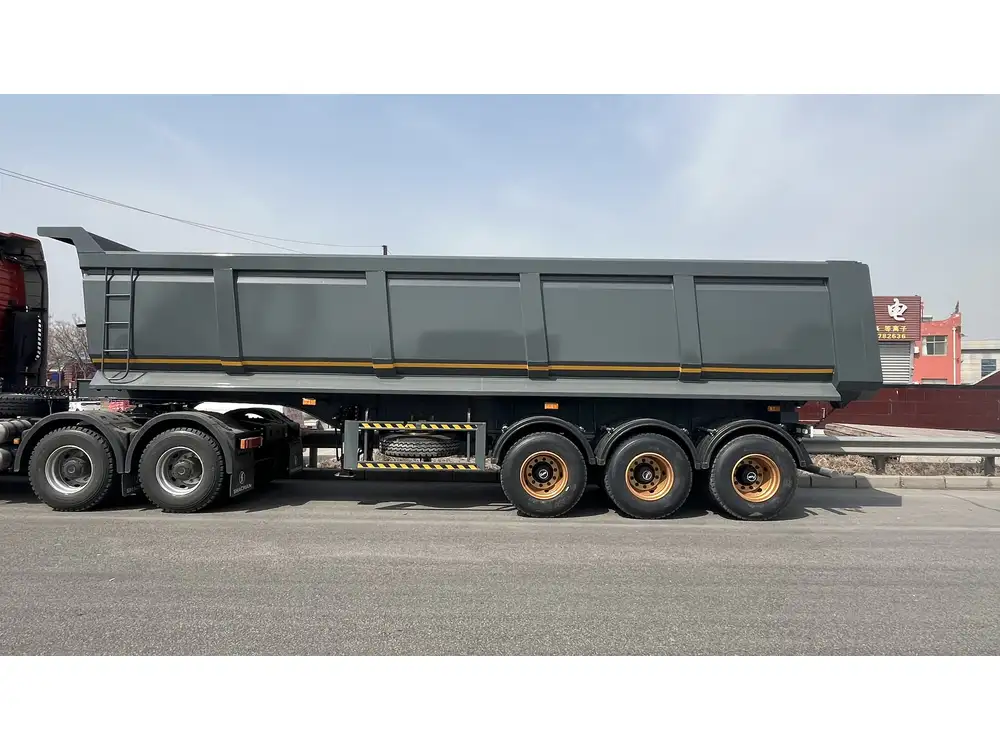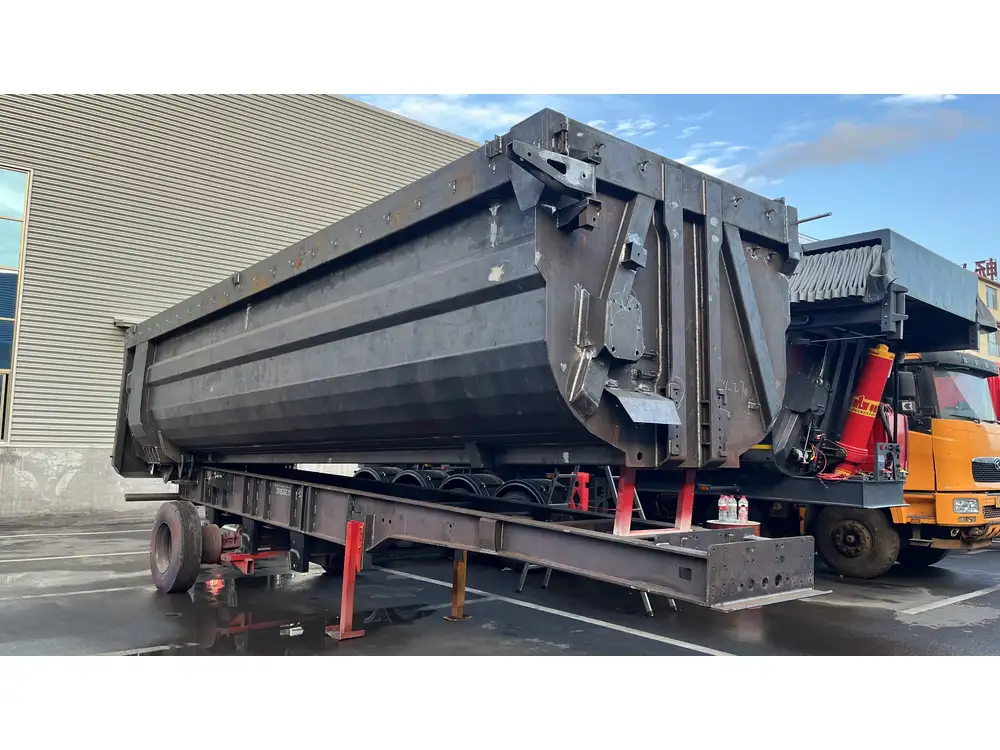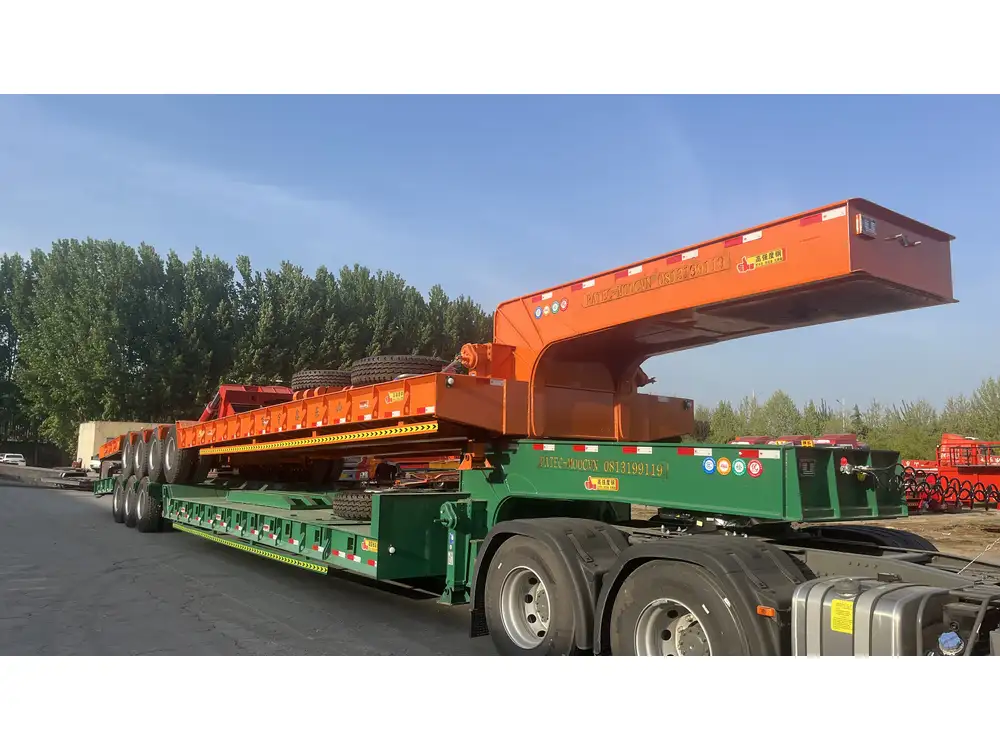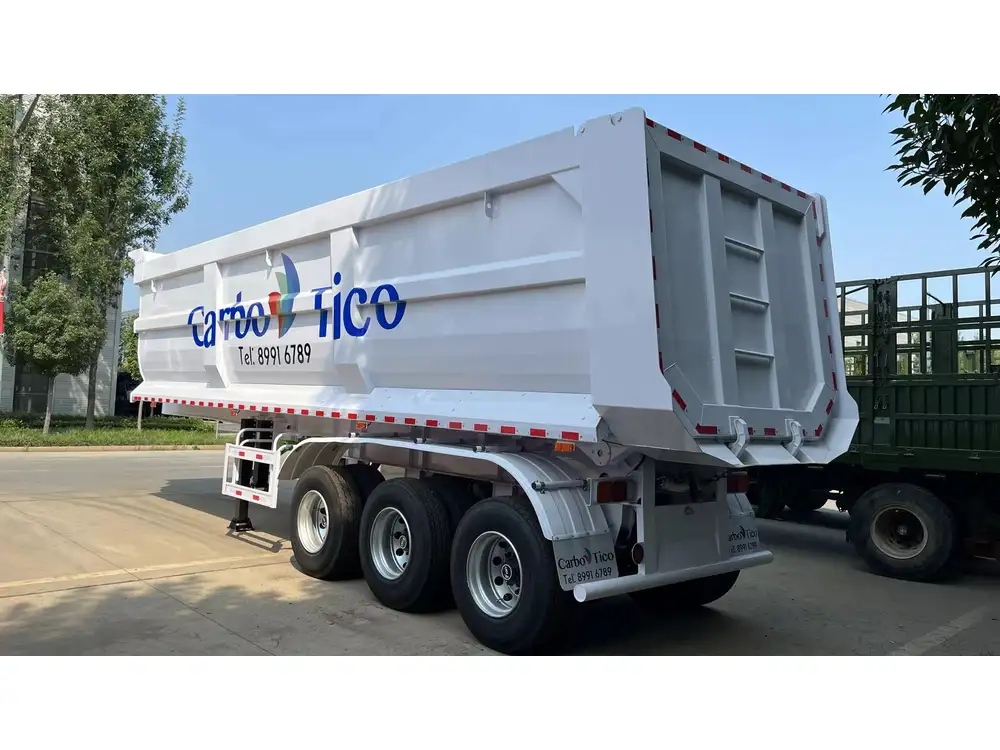Introduction
In the trucking industry, understanding the weight specifications of semi tractor trailers is crucial for various reasons, including compliance with regulations, safety, and efficiency. This article aims to provide a comprehensive exploration of the factors affecting the weight of semi tractor trailers, how this weight is measured, and why it matters. Our objective is to equip manufacturers, truck owners, and other stakeholders with a detailed grasp of this essential aspect of transportation logistics.
Factors Influencing the Weight of Semi Tractor Trailers

1. Vehicle Structure and Design
The structural design of a semi-trailer can significantly influence its overall weight. Here are critical elements to consider:
| Element | Description |
|---|---|
| Material Used | Trailers are typically made from steel, aluminum, or composite materials. Aluminum trailers are lighter, adding to overall payload capacity. |
| Frame Design | A lightweight, yet sturdy frame design can drastically reduce weight while maintaining integrity. |
| Axle Configuration | The number and type of axles (e.g., tandem, tri-axle) affect both weight and load distribution. |
| Suspension Systems | The kind of suspension used, such as air or leaf spring, can also impact the vehicle’s weight. |
2. Size and Type of the Trailer
The dimensions and type of trailer significantly contribute to its weight. Different types serve different purposes, each with unique characteristics:
- Flatbed Trailers: Generally lighter, designed for transporting heavy loads like machinery.
- Reefer Trailers: Heavier due to insulation and cooling systems for transporting perishable goods.
- Tank Trailers: These often contain additional weight from their construction materials to ensure safety and durability under pressure.
| Trailer Type | Typical Weight Range (lbs) |
|---|---|
| Flatbed | 5,000 – 6,000 |
| Reefer | 8,000 – 12,000 |
| Tank Trailer | 12,000 – 20,000 |
3. Load Capacity and Distribution
The total weight of a semi-tractor trailer isn’t determined solely by its own design but also by the weight it carries:
- Payload Weight: The maximum amount a trailer can carry varies based on its design. For instance, a Class 8 truck typically has a Gross Vehicle Weight Rating (GVWR) of up to 80,000 pounds, including the weight of the truck, trailer, and cargo.
- Load Distribution: Uneven weight distribution can affect safety and performance. Understanding load distribution is essential for maximizing carrying capacity within regulatory limits.

4. Compliance with Regulatory Standards
All semi tractor trailers must adhere to regulations set by state and federal authorities, especially concerning weight limits. The Federal Motor Carrier Safety Administration (FMCSA) outlines criteria that must be met, affecting weight specifications:
| Regulatory Standards | Description |
|---|---|
| Bridge Formula | Ensures that no axle exceeds its capacity to prevent road damage. |
| Maximum Weight Limit | Typically set at 80,000 pounds in the U.S. for combined truck and trailer. |
Standard Weight Specifications
When considering the average weight of a semi tractor trailer, it is essential to break it down into permissible categories. Here are standard weights associated with the components of a semi-trailer:
- Tractor Weight: A typical semi-tractor can weigh between 15,000 and 25,000 pounds.
- Trailer Weight: On average, semitrailers weigh from 10,000 to 30,000 pounds based on type and specifications.
- Total Weight: The combined weight of tractor and trailer ranges from 25,000 to 55,000 pounds unloaded. When loaded, the total can approach the federal maximum of 80,000 pounds.
Examples of Weight Configurations
- Tractor + Dry Van: The tractor weighs 20,000 lbs, the dry van trailer weighs 15,000 lbs. Total: 35,000 lbs unloaded.
- Tractor + Reefer: The tractor weighs 22,000 lbs, the reefer trailer weighs 12,000 lbs. Total: 34,000 lbs unloaded.
- Tractor + Flatbed: The tractor weighs 19,000 lbs, while the flatbed trailer weighs 11,000 lbs. Total: 30,000 lbs unloaded.

Importance of Weight Compliance
Maintaining compliance with weight regulations is vital for the trucking industry. Here are some implications of exceeding weight limits:
1. Safety Risks
Overweight vehicles pose substantial risks, including:
- Increased Stopping Distance: Heavier vehicles require longer distances to stop, putting drivers and others on the road in jeopardy.
- Tire Blowouts: Excess weight can overstress tires leading to blowouts, accidents, and costly repairs.
2. Legal and Financial Consequences
Violation of weight regulations can result in severe repercussions:
- Fines and Penalties: Trucking companies may face hefty fines when weighed at weigh stations and found to be over the legal limit.
- Insurance Implications: Overweight violations can lead to increased insurance premiums and complications in claim processing.

3. Operational Efficiency
Understanding and complying with weight specifications helps in optimizing operational efficiency:
- Fuel Consumption: Heavier loads generally lead to increased fuel consumption.
- Load Optimization: Knowing weight limits allows trucking companies to find a balance between carrying enough payload while remaining compliant with regulations.
Calculating and Managing Weight
Tools for Weight Management
- Onboard Weighing Systems: Advanced technology has introduced onboard scales that provide truckers with real-time weight readings. This allows adjustments to be made before reaching weigh stations.
- Weight Distribution Systems: Ensuring proper weight distribution across axles helps maintain compliance and enhances safety.

Best Practices for Manufacturers
Manufacturers can adopt methods to minimize weight while maximizing payload capacity:
- Material Innovation: Introducing lightweight composites can reduce overall trailer weight.
- Component Design Optimization: Using advanced engineering techniques to design lighter frames and trailers without sacrificing durability.
Conclusion
Understanding the weight specifications of semi tractor trailers is not just about meeting legal requirements; it also plays a crucial role in safety, efficiency, and overall logistics management. By staying informed about the variables that influence trailer weight, manufacturers and operators can make better decisions that enhance their operations. Comprehensive knowledge empowers stakeholders to maximize payload while adhering to safety standards and legal requirements.
For professionals in the trucking industry, grasping the complexities around the weight of semi tractor trailers can make a significant difference in operational success. By embracing technology and regulatory knowledge, stakeholders can navigate the challenging landscape of weight compliance effectively, ensuring both safety and efficiency in their operations.
FAQs about Semi Tractor Trailer Weights

How Much Does a Standard Semi Tractor Trailer Weigh?
The average weight of a standard semi tractor trailer ranges from 25,000 to 55,000 pounds when unloaded.
What is the Maximum Weight for a Semi Tractor Trailer?
The maximum federal weight limit for a fully loaded semi tractor trailer is generally around 80,000 pounds.
How is the Weight of a Semi Tractor Trailer Measured?
Weight is typically measured at designated weigh stations using platform scales capable of accommodating the complete rig, including the tractor, trailer, and any freight.

Are There Variations in Weight Based on Trailer Types?
Yes, different trailer types (flatbeds, reefers, tankers) have varying structural characteristics that contribute to their overall weight.
By thoroughly understanding these weight dynamics, trucking professionals are better equipped to ensure compliance, enhance safety, and improve operational efficiency.



